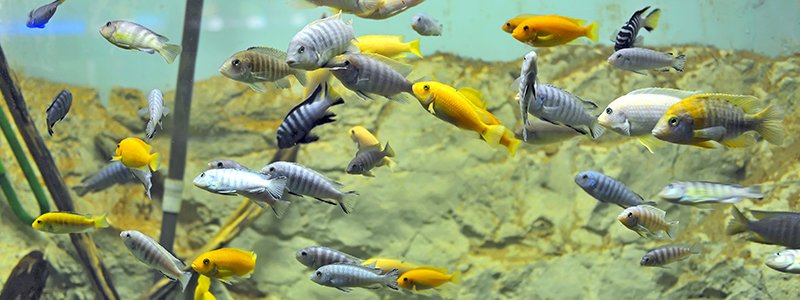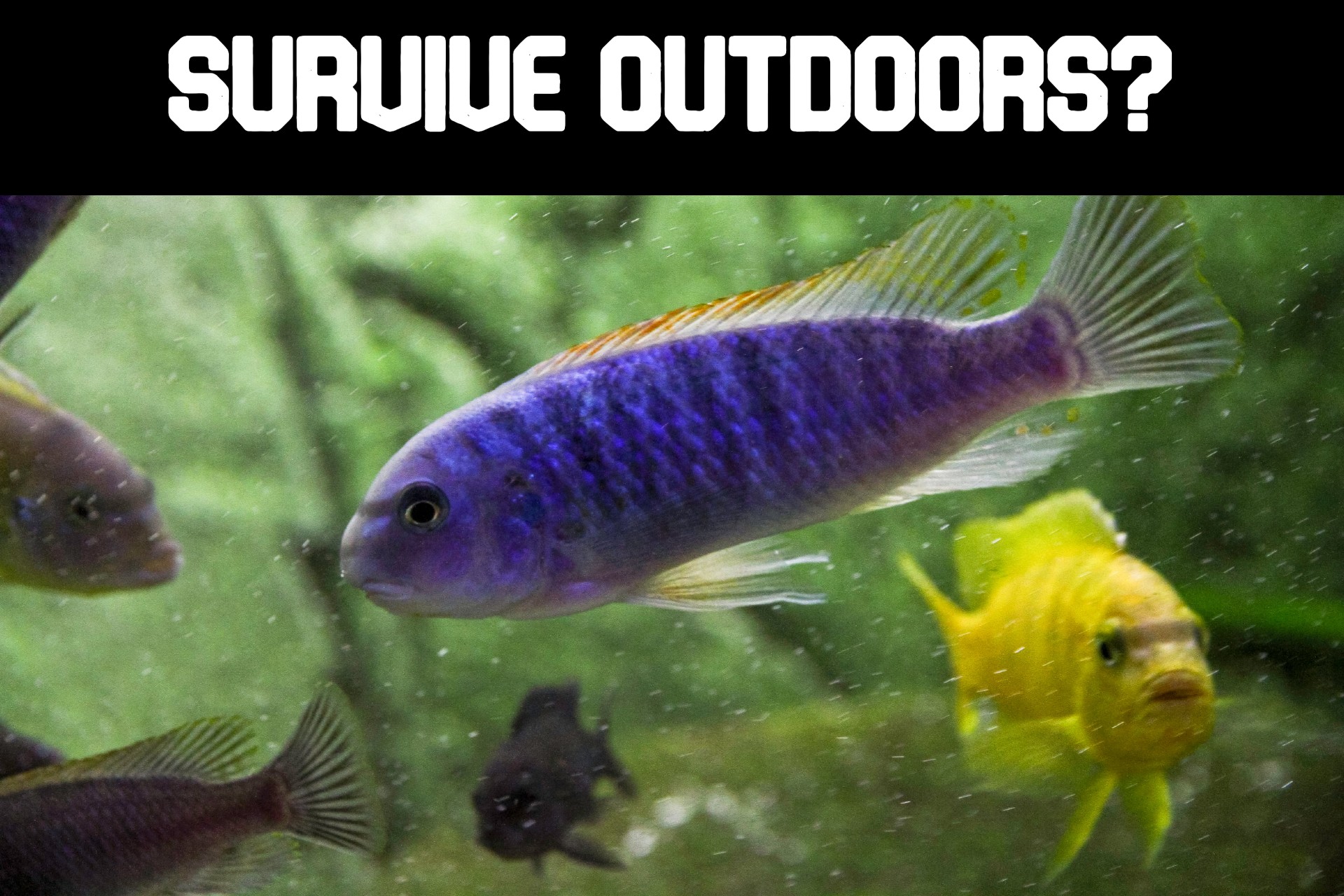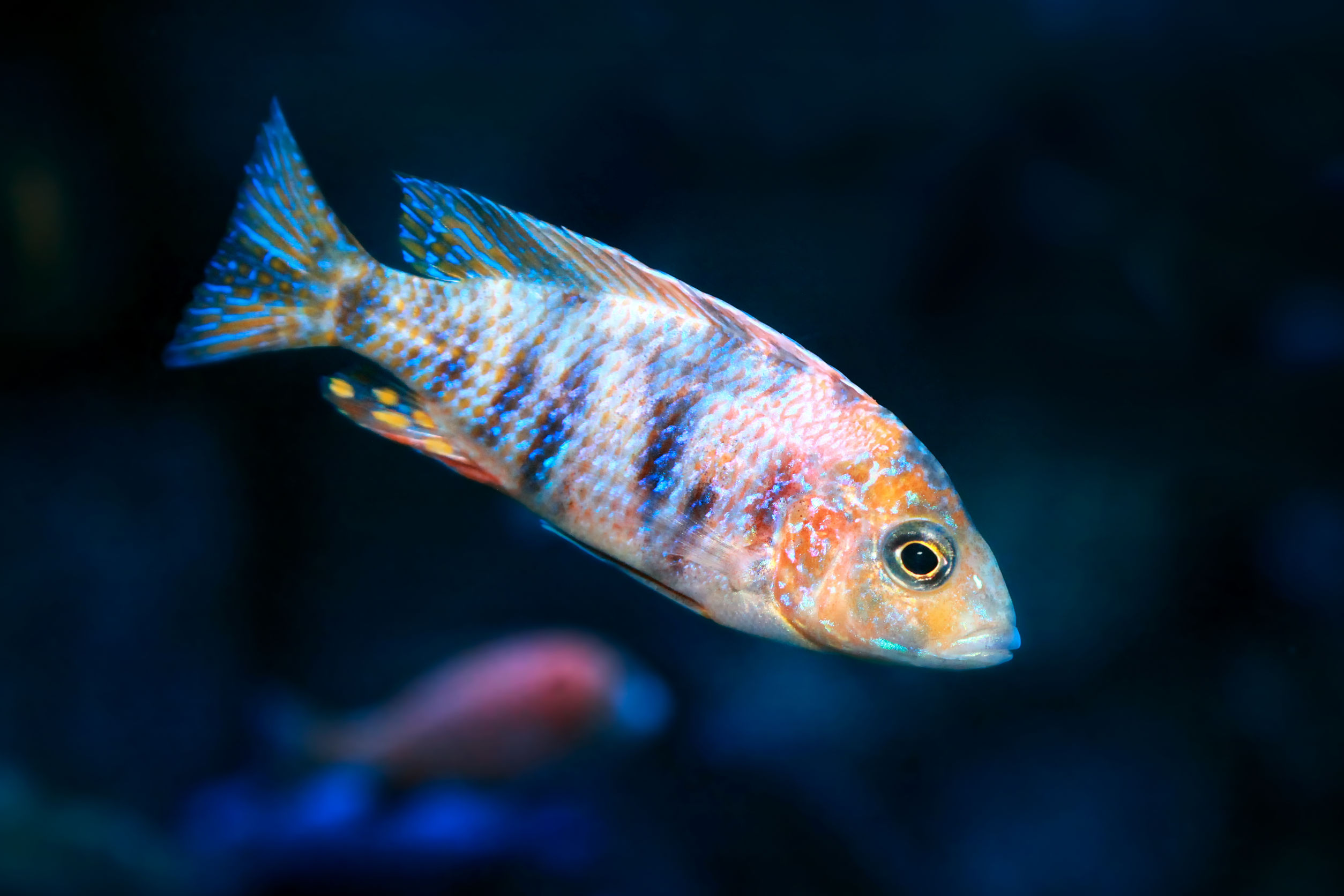When you begin the hobby of fishkeeping and decide to keep cichlids there is something a bit unexpected you may notice: cichlids have personalities. Every single fish has its own unique behaviors, making for every tank having a different dynamic depending on how each fish coexists with the others. While these behaviors make for a really fun experience, there can be some that are rather troubling, as well.
Cichlids sometimes chase each other around their tanks, it is harmless unless other signs that indicate issues are also present. While this may seem like aggression or territorial behaviors, chasing behaviors are entirely normal and simply part of the species’ social structure.
Why do Cichlids chase one another?
Generally, there are four main reasons why fish decide to chase one another.
- Coupling behaviors are the most common non-concerning types of chasing behaviors. Coupling happens when both male and female fish are present in a tank and they are preparing to mate or considering becoming a pair. This is indicated by two fish swimming back and forth rapidly and is nothing to really be worried about. It is simply a part of the life cycle of fish and is not a dangerous behavior.
- Food competition happens when your fish are not being fed enough. When your fish are hungry, they may begin chasing one another and acting a bit aggressively. If you notice your fish chasing one another but not attacking each other, try adding a little more food at different points of the day. They may just be a bit “hangry” and need an extra meal or two.
- Incompatible personality types may also cause chasing. This is one of the more concerning possibilities as if two fish are compatible they cannot exist easily in the same tank. When a more aggressive species is paired with a more docile one, the more aggressive fish may pick on the calmer one. Likewise, two aggressive species may clash, as well. If you notice two fish clashing, it might be a good idea to either add more hides, up the tank size or remove one of them to prevent potential injuries.
- Lastly, there are territorial behaviors. If a fish is in a tank that is too small or one that does not have enough hides, it may begin to behave territory and generally protective by specific areas of the tank. Cichlids are prone to this behavior since they can get a bit on the larger side and are often kept in tanks that are a bit too small for their growth rate. To combat this, do your research before choosing fish to help ensure you are providing adequate care.
How can I prevent Cichlid aggression?
Cichlids are rather active fish and, due to this, they are prone to being a bit more aggressive than your run-of-the-mill goldfish or guppy. Fortunately, there are some things you can do to help combat this and create a thriving little tank community.
- The most important thing you can do is research your desired Cichlid species. Some subspecies are quite small while others are large. Some are docile while others are fiery. You have to research how each species you plan to put into your tank will interact with another. It is best to try and keep all of your fish around the same size and to select those that will suit your tank’s size and your care abilities to ensure that territorial or food competition issues arise.
- It is a good idea to take your desired species’ colorations into account. Many species of Cichlids see their own species as competition and tend to be more aggressive toward these fish. They also have trouble distinguishing between their own species and others of similar colorations, so it is important to select fish that are not of similar colorations or patterns to prevent fighting.
- Another thing to consider when getting Cichlids is how your tank will be set up. You should ensure that the size of your tank is suitable for your selected Cichlid species. If it is too small or lacks horizontal space, they will likely fight. You should also make sure it is possible to rearrange your tank as needed. It is recommended to move things around every few months to prevent Cichlids from getting territorial over specific hides or pieces of decor.
- When you are setting up your tank, try considering getting fish that occupy different areas of the tank naturally. Some Cichlids prefer being near the surface, some like the mid-region, and others are more inclined to swim near the bottom of their tank. Try getting a good mix of these fish to ensure you are not crowding any one area.
- Speaking of crowding, be sure you do not overcrowd your tank. This can drastically increase aggression and lead to some nasty fights. It might be tempting to have a lot of fish but most tanks can only handle a few Cichlids at a time since they can get quite big, depending on their subspecies. Overcrowding can also lead to food competition since some may eat more than others, resulting in injuries becoming more and more common.
- Lastly, be sure to add a lot of hiding spots to your tank. The less your fish see each other, the less likely they are to fight. It might sound silly but if they are not interacting they cannot step on each others’ toes. It keeps things running much more smoothly.
Here is a video where John from KGTropicals where talks about his story of dealing with cichlid aggression:
What Cichlid subspecies are the most peaceful?
In the world of fish, not all species are created equally. Let’s look at the calmer types of Cichlids and how they fit into your tank.
- Angelfish: These gorgeous fish are named not only for their stunning appearance but also for their calm demeanors. They are rarely found to be aggressive and generally do not eat or attack other fish unless they are extremely small. These fish can also be schooled and suit community tanks quite well.
- Keyhole Cichlids: These are one of the least aggressive species of Cichlids available. They are cute, smaller in size at just four or five inches at maturity, and generally always back down from fights. They do like to hide and are quite bashful so be sure you have plenty of places they can escape to if they feel threatened.
- Rainbow Cichlids: One of the most common beginner Cichlids, these fish are rather easy to care for and generally very easy going. They are stunning, non-aggressive, and do well in a tank environment due to their hardy nature and adaptability. If you are just starting out with keeping Cichlids, this is the way to go.
- Bolivian Rams: These cute little brown fish only get to be three inches long, give or take, and are very peaceful, making them perfect for tanks. With their multi-colored highlights and silly personalities, Bolivian Ram Cichlids are becoming more and more popular with beginner fish keepers and make for great first-time fish.
- Blue Acara: If you want a fish that is a little more striking in appearance and feel confident enough to handle some specific requirements, the Blue Acara is a fantastic choice. Their brilliant blue color is quite appealing and they are generally very calm fish. They do require warmer water (around 78 or 80 degrees Fahrenheit) and are notorious diggers who must have sandy substrate and can pain when it comes to uprooting aquatic plants and knocking things about. Still, they are beautiful and totally worth giving a shot if you have the means to care for them properly.
What are some of the most aggressive Cichlid species?
- Jack Dempsy Cichlids: This fish is probably what you imagine when you think of a Cichlid. It is one of the most commonly sold options in North America and across the globe due to its bright colors and appealing figure. Unfortunately, these fish get really large and are quite aggressive. Since they are often sold at a lower price, they often are placed into tanks that are inadequate for their size and personality requirements, resulting in even worse aggressive behaviors.
- Oscar Fish: As one of the largest Cichlid species, two of these fish in a pair need more than 100 gallons to be comfortable. When picked up by someone who does not understand this and placed into a run-of-the-mill tank, these fish tend to be extremely aggressive and will kill everything they come across if not stopped. Pass on the Oscars if you are not prepared to commit to a massive tank.
- Flowerhorns: Although they are man-made, they come from cichlid genetics. Male Flowerhorns usually do not tolerate any tank mates…including themself. If they see a reflection of themselves it’s no doubt they’ll attack.
Conclusion
In general, Cichlids often engage in chasing behaviors. While it is usually nothing to worry about, obviously separate your fish if you notice them actively hurting each other or if one appears to be extremely aggressive towards other fish in the tank. Do your research to ensure all species are compatible before introducing them and you should be just fine!





